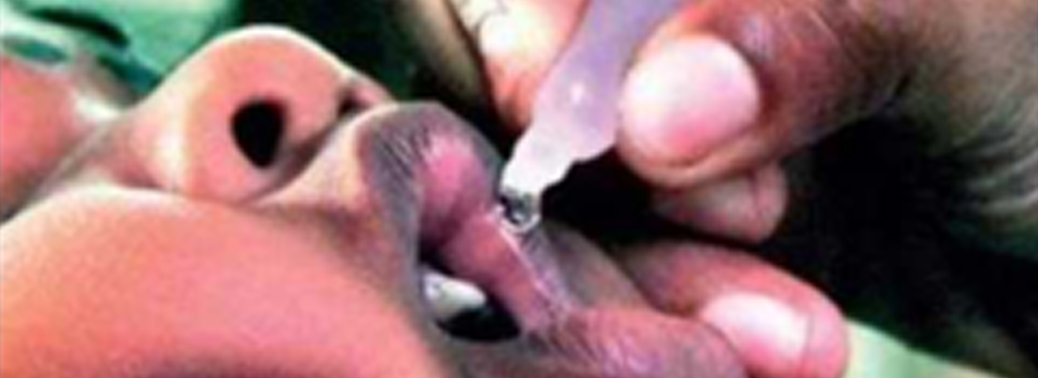ORAL POLIO VACCINE (OPV)
27, Nov 2019

Prelims level : Medicine and Pharmaceuticals
Mains level : GS-III Science & Technology
Why in News?
- According to Ministry of Health, OPV benefits far outweigh the risks.
About:
- World Health Organization and the Indian government on polio eradication policy described the continued use of OPV as an “ethical anomaly” that is causing avoidable polio to children.
- India has been free from wild polio virus since 2011, but the Ministry of Health and Family Welfare has never released data on vaccine associated polio paralysis (VAPP), a rare adverse effect of OPV that causes infantile paralysis.
- The OPV given to children worldwide is Type 2 vaccine viruses which was withdrawn from use in 2016 because it continues to contain Type 1 and 3 strains of viruses that can cause VAPP.
- Children in India are given two intradermal fractional doses of IPV at 14 weeks and 6 years instead of recommended one full dose intramuscular IPV at 14 weeks.
- We relied on OPV because of the results it has shown in last 25 years in eradicating wild polio.
- We are following WHO guidelines on polio eradication program and do not have the technical expertise to go beyond its recommendation.
Poliomyelitis:
- It often called polio or infantile paralysis is an acute infectious disease caused by polio virus. The virus is a human enterovirus of the Picornaviridae
- There are three types of Polio Virus: 1,2,3-Single stranded RNA virus Natural or Wild Polio Virus (WPVS).
- It is transmitted from one person to another by oral contact with secretions or faecal material from an infected person.
- It attacks the central nervous system through the blood stream and damage the cells and paralyses the victim.
Types of Polio vaccines
- Two Different Kinds of vaccine are available: an inactivated (killed) polio vaccine (IPV) and a live attenuated oral polio vaccine (OPV).
Inactivated Polio Vaccine (IPV):
- It is produced from wild-type poliovirus strains of each serotype that have been inactivated (killed) with formalin.
- It is an injection able vaccine and can be administered alone or in combination with other vaccines (e.g., diphtheria, tetanus, pertussis, hepatitis B, and Hemophilus influenza).
Oral Polio vaccine (OPV):
- It consists of a mixture of the three live attenuated poliovirus serotypes (Sabin types 1, 2 and 3), selected for their lower neurovirulence and reduced transmissibility.
- Apart from trivalent OPV (tOPV), monovalent OPVs viz. against Type 1 (mOPV1) and against type-3 (mOPV3) have been licensed for use in some countries.
Vaccine-associated paralytic polio (VAPP):
- OPV is made with live attenuated (weakened) polioviruses that can result in a case of vaccine-associated
- It is approximately 1 in 2.7 million doses of OPV.
- It is caused by a strain of poliovirus that has genetically changed in the intestine from the original attenuated vaccine strain contained in OPV.
- It is associated with a single dose of OPV administered in a child or can occur in a close unvaccinated or non-immune contact of the vaccine recipient who is excreting the mutated virus.
- The risk of VAPP varies by dose and by setting. The subsequent doses of vaccine is even lower than from the first dose in industrialized countries.
- This is because in these settings the first dose of OPV stimulates immunity against polioviruses (whether wild poliovirus or the weakened poliovirus contained in OPV).
- In developing countries, the risk of VAPP is higher from subsequent doses than following the first dose.
- The very small risk of VAPP is to the individual susceptible vaccine recipient or close contact. Theweakened virus may paralyze the child or his or her contact, but does not spread to cause other cases of paralysis.
Some Other Types of virus:
Vaccine Derived Poliovirus (VDPV):
- A VDPV is a very rare strain of poliovirus, genetically changed from the original strain contained in OPV.
- On very rare occasions, under certain conditions, a strain of poliovirus in OPV may change and revert to a form that may be able to cause paralysis (VDPV) in humans and develop the capacity for sustained circulation. The latter is known as a circulating VPDV (cVDPV).
Circulating vaccine derived poliovirus (cVDPV):
- A cVDPV is associated with sustained person-to-person transmission and is circulating in the environment.
- Persistent cVDPVs refer to cVDPVs known to have circulated for more than six months.
- cVDPVs are extremely rare.
- During the last ten years, only 24 cVDPV outbreaks have occurred in 21 countries, resulting in morethan 750 cases of paralytic polio.
- cVDPVs occur when routine immunization or supplementary immunization activities (SIAs) are poorlyconducted and a significant proportion of the population is left susceptible to poliovirus.
- Low vaccination coverage is a major risk factor for cVDPV emergence. A fully immunized populationwill be protected against both vaccine-derived and wild polioviruses. It takes many months for a cVDPVto emerge.Its outbreaks have the ability to become endemic, can be spread in any under-vaccinated
- communities, and can be imported to other countries.It can be stopped with 2 to 3 rounds of high-quality, large-scale supplementary immunizationOutbreak response strategies for cVDPVs and wild polioviruses are the same: immunize every child under the age of five years several times with OPV to stop transmission.Due to the risk of cVDPVs, OPV must be phased out to secure a lasting polio-free world.






